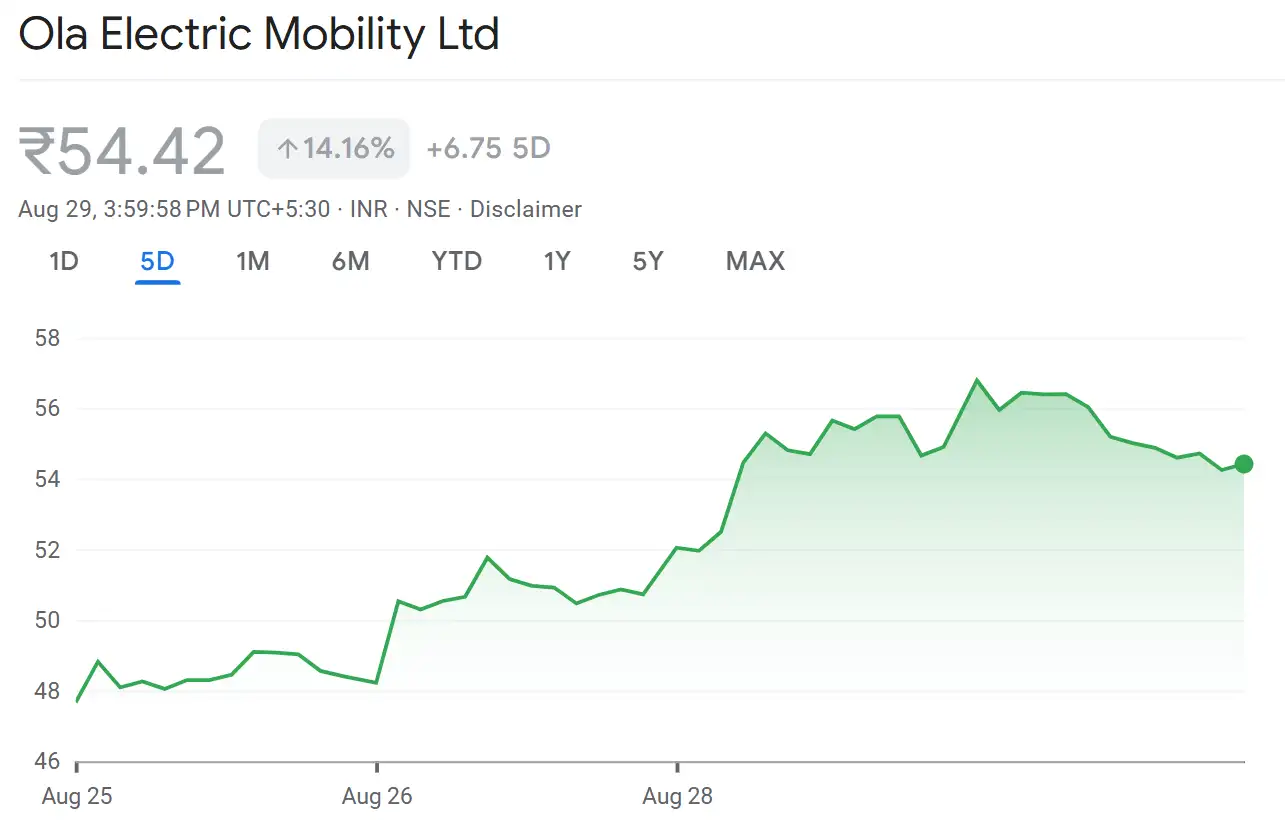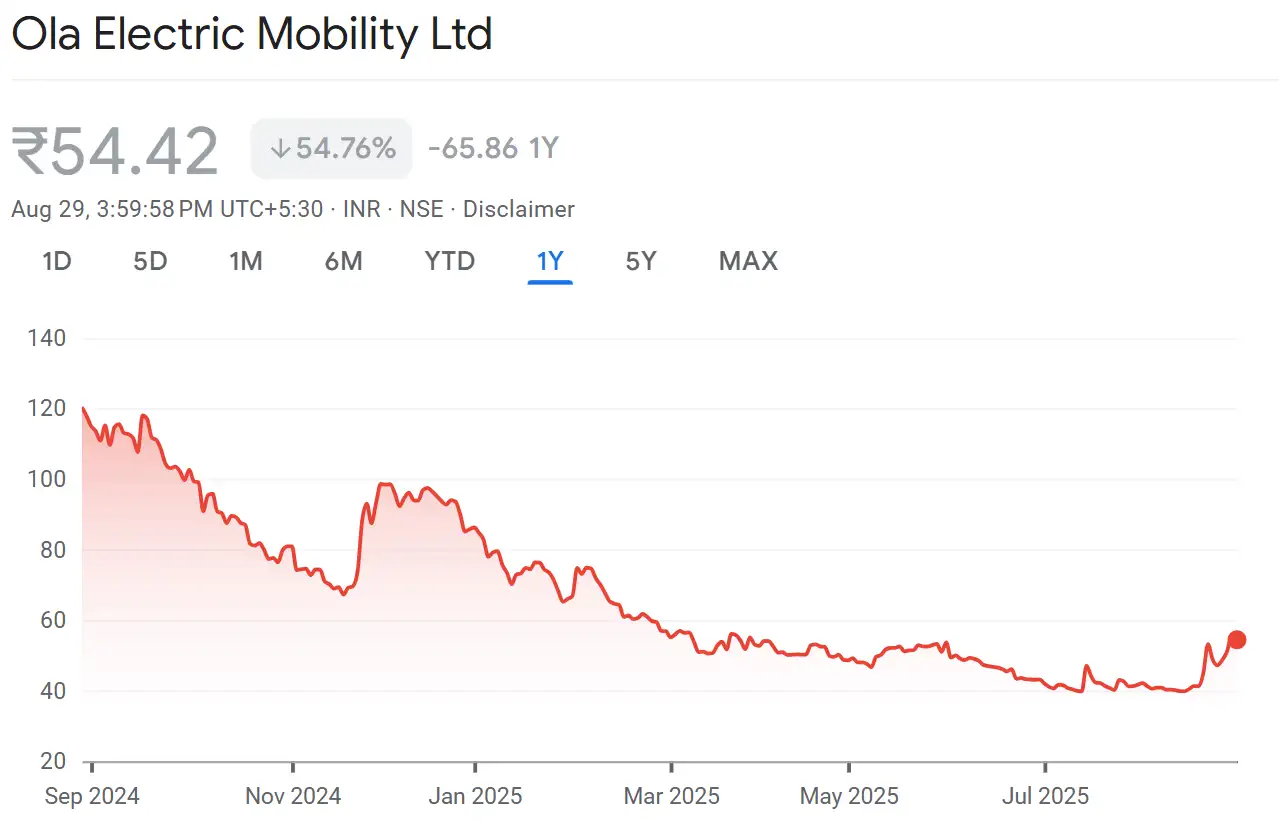Factors behind the rise
PLI certification: Earlier this week, Ola Electric secured the Production Linked Incentive (PLI) certification for its Gen 3 scooter portfolio. It makes the electric two-wheeler line-up eligible for several government incentives, ranging from 13% to 18% of the determined sales value of these scooters, until 2028. These incentives are expected to boost profitability and margins from this quarter.
The certification, granted by the Automotive Research Association of India (ARAI) under the ministry of heavy industries, covers all seven variants of Ola’s Gen 3 scooters, including the S1 Pro and S1 X series. Its Gen 2 scooters are already PLI-certified.
Market strategy: Founder and chief executive Bhavish Aggarwal said the company will focus on profitability after its sales halved and net loss widened 23% in the April-June quarter. After the disappointing results, the EV maker is moving away from aggressive expansion and towards operational stability, he said.
New technology, categories: At its annual event on August 15 at the company’s Gigafactory in Tamil Nadu, Ola Electric launched a slew of new products, including its first indigenously manufactured 4680 Bharat cell battery and a rare-earth metal-free motor.
The company also introduced MoveOS 6, its upgraded operating system that follows MoveOS 5. The new version adds features such as a voice assistant, camera, customisable motor sounds, personalised ride insights, and speed boost.
At the event, Ola Electric also announced vehicles, including new scooters — S1 Pro+ and S1 Pro Sport, as well as electric motorcycles Roadster X+ and Diamond Head.
 Agencies
AgenciesRoadblocks remain
Market share woes: Ola Electric is attempting to recapture market share in the crowded electric two-wheeler space. The recently listed Ather Energy surpassed it in the first 27 days of August to claim the second position in terms of market share, ET reported.
Tax issue: Potential reforms to India’s Goods and Services Tax (GST) regime announced by Prime Minister Narendra Modi earlier this year raised concerns that EVs could lose ground to traditional cars if tax cuts disproportionately favour internal combustion engine (ICE) models.
Strained financials: The company posted a net loss of Rs 428 crore in the first quarter of FY26 and revenue halved year-on-year to Rs 828 crore. On a positive note, gross margin improved to 25.6% from 18.4% last year, driven by cost rationalisation. Expenses fell 42.4% year-on-year to Rs 1,065 crore, mainly due to an Rs 870 crore reduction in material costs.
Supply chain woes: The company is majorly impacted, like all its rivals, by China’s rare earth export curbs announced earlier this year. Ola announced at its annual event on August 15 that the company has accelerated its work on motors without rare earth magnets to reduce reliance on outside markets. While the curbs have been eased, the strain signals supply chain dependency on imported raw materials.
Long way to go on the bourses: Despite the recent rally, Ola Electric’s stock is way under its listing price of Rs 76. The company shares have lost nearly 37% of their value year-to-date. The stock took a beating through the year due to regulatory fallout and consumer grievances, dropping 55% over the past 12 months.
 Agencies
AgenciesConsumer watchdog Central Consumer Protection Authority (CCPA) opened investigations into unresolved consumer complaints against the company for after-sales issues. Ola also faced probes for regulatory compliance, such as trade certificate violations and poor sales reporting.
Source link
https://www.infinitycompliance.in/product/online-company-registration-in-india/
